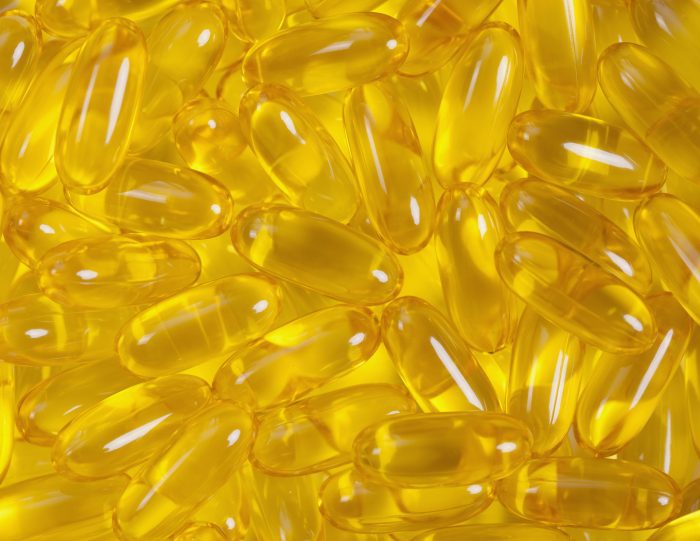Medical Compass: Is more vitamin D better?
Obesity can reduce the benefits of supplementation
By David Dunaief, M.D.

Here in the Northeast, it’s the time of year when colder temperatures mean we’re spending lots of time indoors. When we are outside, we cover most of our skin to protect us from the cold. This means we’re not getting a lot of sun. While this will make your dermatologist happy, it also means you’re probably not converting that sun exposure to vitamin D3.
There is no question that, if you have low levels of vitamin D, replacing it is important. Previous studies have shown that it may be effective in a wide swath of chronic diseases, both in prevention and as part of a treatment regimen. However, many questions remain.
Many of us receive food-sourced vitamin D from fortified packaged foods, where vitamin D has been added. This is because sun exposure — even under the best of circumstances — will not address all of our vitamin D needs. For example, in a study of Hawaiians, a subset of the study population who had more than 20 hours of sun exposure without sunscreen per week, some participants still had low vitamin D3 values (1).
We know vitamin D’s importance for bone health, but we have mixed data for other diseases, such as cardiovascular, autoimmune and skin diseases and cancer.
There is no consensus on the ideal blood level for vitamin D. For adults, the Institute of Medicine recommends between 20 and 50 ng/ml, and The Endocrine Society recommends at least 30 ng/ml.
Are there cardiovascular benefits to vitamin D?
Several observational studies have shown benefits of vitamin D supplements with cardiovascular disease. The Framingham Offspring Study showed that those patients with deficient levels were at increased risk of cardiovascular disease (3).
However, a small randomized controlled trial (RCT) called the cardioprotective effects of vitamin D into question (4). This study of postmenopausal women, using biomarkers such as endothelial function, inflammation or vascular stiffness, showed no difference between vitamin D treatment and placebo. The authors concluded there is no reason to give vitamin D for prevention of cardiovascular disease.
The vitamin D dose given to the treatment group was 2,500 IUs. Some of the weaknesses of the study were a very short duration and small study size.
How does vitamin D affect mortality?
In a meta-analysis of a group of eight studies, vitamin D with calcium reduced the mortality rate in the elderly, whereas vitamin D alone did not (5). The difference between the groups was statistically important, but clinically small: nine percent reduction with vitamin D plus calcium and seven percent with vitamin D alone.
One of the weaknesses of this analysis was that vitamin D in two of the studies was given in large amounts of 300,000 to 500,000 IUs once a year, rather than taken daily. This has different effects.
Does obesity affect vitamin D absorption?
A recently published analysis of data from the VITAL trial, a large-scale vitamin D and Omega-3 trial, found that those with BMIs of less than 25 kg/m2 had significant health benefits from supplementation versus placebo (2). These included 24 percent lower cancer incidence, 42 percent lower cancer mortality, and 22 percent lower incidence of autoimmune disease. Those with higher BMIs showed none of these benefits.
Can vitamin D help you lose weight?
There is good news, but not great news, on the weight front. It appears that vitamin D plays a role in reducing the amount of weight gain in women 65 years and older whose blood levels are more than 30 ng/ml, compared to those below this level, in the Study of Osteoporotic Fractures (6).
This association held true at baseline and after 4.5 years of observation. If the women dropped below 30 ng/ml in this time period, they were more likely to gain more weight, and they gained less if they kept levels above the target. There were 4,659 participants in the study. Unfortunately, vitamin D did not show statistical significance with weight loss.
USPSTF recommendations and fracture risk
The U.S. Preventive Services Task Force recommends against giving “healthy” postmenopausal women vitamin D, calcium or the combination of vitamin D 400 IUs plus calcium 1,000 mg to prevent fractures, and it found inadequate evidence of fracture prevention at higher levels (7). The supplement combination does not seem to reduce fractures, but does increase the risk of kidney stones. There is also not enough data to recommend for or against vitamin D with or without calcium for cancer prevention.
When should you supplement?
It is important to supplement to optimal levels, especially since most of us living in the Northeast have insufficient to deficient levels. While vitamin D may not be a cure-all, it might play an integral role with many disorders. But it is also important not to raise the levels too high. The range that I tell my patients is between 32 and 50 ng/ml, depending on their health circumstances.
References:
(1) J Endocrinology & Metabolism. 2007 Jun;92(6):2130-2135. (2) JAMA Netw Open. 2023 Published online Jan 2023. (3) Circulation. 2008 Jan 29;117(4):503-511. (4) PLoS One. 2012;7(5):e36617. (5) J Women’s Health (Larchmt). 2012 Jun 25. (6) J Clin Endocrinol Metabol. May 17, 2012 online. (7) JAMA. 2018;319(15):1592-1599.
Dr. David Dunaief is a speaker, author and local lifestyle medicine physician focusing on the integration of medicine, nutrition, fitness and stress management. For further information, visit www.medicalcompassmd.com or consult your personal physician.







